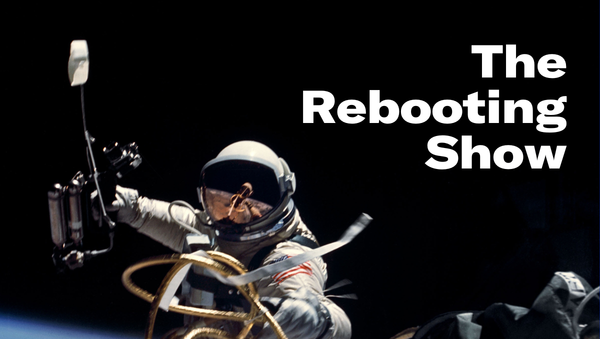‘Grab ‘em by the pageviews’: Growth hacking to nowhere
Distribution gets you only so far

Welcome to The Rebooting, especially new subscribers. I always like to hear from readers -- I spoke to several this week -- so feel free to email me with any thoughts or feedback: bmorrissey@gmail.com. I’ve delayed my play to do my year-in-review analysis in favor of a final -- I swear, this is it -- column on what I hope the media business takes away from the tragi-farce that is Ozy. Before we get to that, I want to tell you about The Rebooting’s sponsor, One Day University.

Subscriptions are a critical part of the future of sustainable media business models. Recurring revenue is more reliable than the up-and-down ad market, not to mention the majority of it being sucked up by big tech platforms. Many publishers have seen early success in converting loyal readers into customers. This is a gamechanger for publishing. But the thing with subscriptions is you’re fighting a two-front war: you need to acquire customers and you need to keep them. One Day University partners with publishers to provide improved performance on both fronts. It does this by allowing publishing partners to bundle a free trial of One Day University’s library of 500-plus lectures, including history, politics, music, art, film, psychology, literature, science -- and even a little bit of philosophy. This is a very effective way to add value to your subscription or membership offer. One publisher working with One Day U saw a 31% increase in new subscribers and a 21% drop in cancellations after just one month. One Day University founder Steven Schragis will explain more (and likely make a deal with you) if you contact him at Steven@Onedayu.com
As we hit the midpoint of week 2 of the Ozy Media story -- hard to imagine Ben Smith only published his column 10 days ago -- we’re entering into an interesting phase. The original reporting hinged on what sure looks like fraud with an Ozy executive impersonating a YouTube executive in order to secure the company an investment from Goldman Sachs. But, as I wrote last week, this deception was one of a series of deceptions undertaken by Ozy that are common in digital media. Consider this bill of particulars:
- Bought traffic, followers, emails, even Instagram likes in order to appear relevant
- Claimed an overall audience of 75 million based on “social media interactions”
- Used those numbers to pry money from investors and advertisers
- Kept employees in the dark about the true state of the company while treating them shittily
- Regularly misled to the press about everything from the company’s audience size, investor base, number of paying attendees at events, among other matters
- Lied about the distribution of “The Carlos Watson Show” to both potential guests and the show’s own producer
- Lied about Sharon Osbourne being an investor in the company.
Proving yet again that shamelessness is the greatest competitive advantage, Ozy CEO Carlos Watson is vowing a “Lazarus moment” during a profoundly odd media tour, which has included a conspiracy theory that Ben Smith is trying to take down Ozy because he still has shares in BuzzFeed. I’m reminded of the adventure book and movie “Into the Void,” where a climber falls into a crevice and recognizes he’s in so deep that the only route is to keep going deeper in the hopes of finding a way out. Worked out for the climber, don’t see that happening here. Money people don’t like looking foolish -- and no agency is going to want to put Ozy on a plan and answer why. And then there are the employees, who never deserved any of this. They’re shockingly not in a rush to re-enter the Ozy Slack. Not a shock based on the experience of former editor-at-large Eugene Robinson.
Why in the world has this story about an obscure media company most never heard of before last Sunday had such legs? My belief is the Ozy story is a reflection of digital media’s growth-at-all-costs phase, too often fueled with massaged numbers and a tendency to look the other way at garden-variety deceptions, while the people who should know better -- investors and advertisers -- didn’t do basic diligence.
There is a school of thought that, while perhaps extreme in their totality, many of Ozy’s sketchy audience tactics, outlined back in 2017 by Craig Silverman, are par for the course in the media business, where optics are sometimes as important as reality. If you’re not cheating, you’re not trying. Time to unclutch the pearls. “Everyone does it on every metric,” was one in-the-know response. One man’s “buying audience” is another’s “acquisition advertising.” The real problem wasn’t the fake-it-till-you-make it approach but failing to ultimately convert the synthetic audience into a real audience. Time to get off those high horses and return to the content mines, content serfs.
There is, after all, a long history of companies looking to grow quickly on the back of distribution tactics in order to build big reach numbers. Many times this works: Look at HuffPost’s smart use of SEO, BuzzFeed’s mastery of social, and more recently Morning Brew bought tons of ads to grow its email newsletter.
But distribution alone gets you only so far if you can’t back it up with quality content. Google gave birth to a cottage industry of publishers built off mastering search optimization to appear for all manner of searches. This reached its apex/nadir with Demand Media giving the world the definitive guide to “how to boil water” and publications competing each year to rank at the top of searches for “what time does the Super Bowl start” searches. The saddest instance of SEO run amok was when Funny or Die found itself with a “gang rape” page auto-generated from a dubious SEO operation. Facebook’s algorithm similarly spawned publications built off getting into the News Feed, tweaking headlines and regurgitating viral-friendly content to bank pageviews. Email is no different. Publications have long cut corners by running contests with travel giveaways or simply buying lists. Ozy boasted an absurd 25 million email subscribers. Big numbers were key, however they were gotten.
Time and again, deceptive practices of all stripes are shrugged away as the way the game is played. Don’t hate the player, hate the game. As one former digital media CEO texted me, “Feels a lot like, ‘Grab em’ by the pageviews. You can do anything.’” Watson has tried out this defense, arguing that paid distribution is more real than flimsy algorithmic traffic. We’re slicing the onion pretty thin at that point. No wonder advertisers worry they’re not getting what they pay for with their ad dollars. After all, how many publishers “forgot” to mention most of the traffic to their native ad placement was bought just like Ozy’s? Sorry, concealment is a form of deception, and if it’s the normal course of doing business, you need a new business model.
I’m left with a simple question: Why accept this? One of the defining challenges for the media business is how to find sustainable business models. Alongside that, sometimes treated separately, is a trust crisis. There is great distrust in the accuracy and truth of digital content, investors would be wise to not trust the promises being made, advertisers don’t trust agencies are looking out for their interests or even that their ads are reaching the people they’re supposed to reach, and publishers don’t trust the archipelago of intermediaries isn’t siphoning off ad money theoretically earmarked for publishers. Oh, on top of that, the workers in these organizations don’t trust what their bosses are telling them. After all, Watson’s “narrative” was aimed at investors, advertisers and employees. Of the people left holding the bag, the last group is the one hurt the most and with the least amount of power. No wonder they’re pissed and want nothing to do with the enterprise. The unbundling of media is benefiting formats like newsletters and podcasts because they’re more personal, and people trust other people more than faceless institutions given humanoid characteristics in a brainstorm with the marketing department.
I called this The Rebooting because I believed the pandemic would result in lasting change. It will take many years to play out -- I know enough to keep the date for predictions coming true vague -- but I believe we will see a wholesale reappraisal of how we organize societies, governments and economies. That includes the media business. It must be rebooted so the idea that cutting corners and calling it growth hacking is not an accepted strategy. Ethics and principles are core to restoring trust, not just in reporting practices but in business practices. There are too many “operators” who take shortcuts when the media business is, always has been and always will be a long game. You can growth hack distribution, but the pendulum is swinging back to building off great content building loyal audiences instead of synthetic media built off optimization tactics and the hope that a “real” audience can somehow be found. In the meantimes, you mix the fake with the real to appear larger.
That will require a mindset shift of many in the media business. Being full of shit should be a liability, not a hustle merit badge. Excusing shady behavior isn’t a sign of sophistication. Growth hacking is a marketing term for cutting corners. Advertisers need to stop obsessing about big numbers and accept smaller but loyal audiences are more valuable.
The unfortunate part is all this corner cutting comes at the expense of publishers who want to build real businesses with real audiences. This takes a long time, requires consistent execution and often gets less attention than the “buzzy” (always hated that term) synthetic media. The $80 million Ozy raised could have done immeasurable good if deployed to more worthy endeavors. But as Smith notes, “the whole episode seemed to confirm the widely held suspicion that venture capital and advertising may be the world’s least rigorous industries.” Lauren Williams, the former Vox editor-in-chief and now CEO of Capital B, points out the entire affair shows just how hollow were the promises made by advertisers to spend more on Black-run media. “Too many of the people responsible for doling out the dollars that keep the industry afloat would prefer to give money to a company like Ozy, with an Ivy League-educated pitch man selling a shiny, controversy-free vision of news and opinion, with none of the real-world stuff.” No lies detected.
The media business needs to restore trust with all constituencies, and these games don’t help. The shift to brands built around individuals will further this shift. Synthetic media has proven not to be durable in most cases. The answer lies in approaching the media business differently, focusing on building durable audiences, even if they’re smaller, with business models that follow the editorial mission. And above all else, the industry needs to prioritize honesty above hype.
Thanks again for reading. If you enjoyed this newsletter, please share it with friends, colleagues, family members and Ozy investors. Next week, I’ll finally detail my first year operating The Rebooting, including lessons learned and mistakes made.




